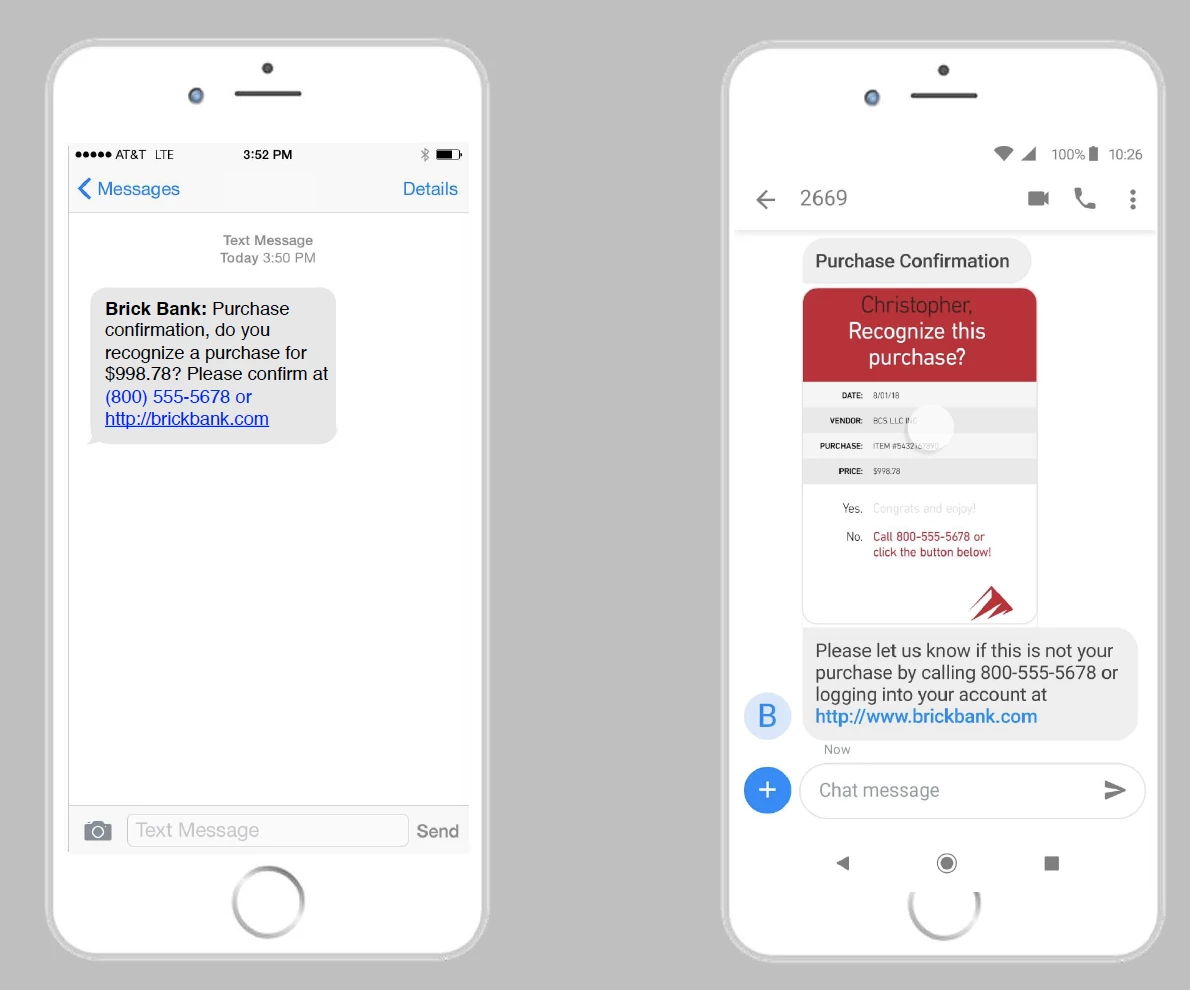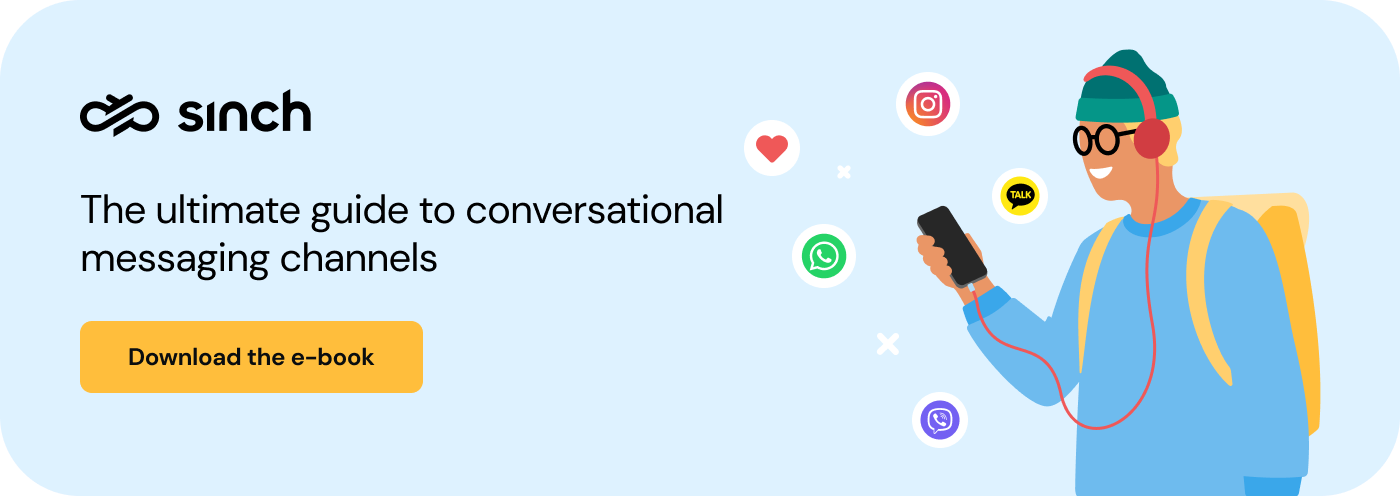Almost everyone today is using text messaging to communicate. And that’s why marketers are starting to join in and add SMS marketing to their multichannel strategies. SMS is kind of the “standard” form of text message marketing, and is the most preferred method of mobile communication among marketers.
But then, there’s this MMS thing. Is it any different? Does it matter?
Yes. And marketers should definitely take a minute to understand their distinctions, because while SMS excels in delivering concise messages instantly, MMS offers a richer experience with multimedia content like images, audio, and video. Depending on your customer base location and demographics, one may be more effective than the other.
In this article, we’ll break down MMS vs SMS messages, how they differ, when to use them, and more.
What’s SMS messaging?
SMS, or Short Message Service, messages are what most people think of when they think of text messaging: Simple, short messages received on a mobile phone. Officially, SMS messages are limited to 160 characters and can only include written text characters, as well as links to websites.
So as a marketer, you can use SMS to send reminders and other types of automated texts. You can send promotional texts about upcoming events, deals, or coupons. And you can send business texts highlighting a new product with a link to learn more about it.
What’s MMS messaging?
MMS stands for multimedia messaging service. With MMS, you can also send video, audio, graphics, emojis, and GIFs in addition to text characters.
From a marketing perspective, MMS allows you to send a more comprehensive message directly to your subscribers’ cell phones that are often more engaging than using characters alone.
MMS travels over the same mobile networks as SMS and arrives in your subscribers’ text message inbox. And most people open every single one of these kinds of messages — often within minutes of receiving them.
What’s the difference between SMS and MMS?
While SMS restricts your messages to written characters and links, MMS allows you to send videos or audio files up to 30 seconds long, and up to 500MB of data. And you can include up to 1600 characters – ten times as many as the 160 character limit for SMS.
The main difference between SMS and MMS is MMS’ versatility. With MMS, you can do much more, like sending longer messages, or sending messages that better capture and keep peoples’ attention.
Additionally, MMS usually costs more to use because you’re sending much higher quantities of data over carrier networks. That’s why, even if you love the versatility and higher capacity of MMS, you’ll probably always use SMS messages for some of your text marketing. Some messages can be expressed very well in under 160 characters, and in those situations, SMS will do just fine.
Are MMS and SMS different than iMessage?
MMS and SMS are different than over-the-top (OTT) channels like iMessage. MMS and SMS messages are both transmitted via mobile network infrastructure through your carrier’s service, whereas iMessage relies on a connection to WiFi or a provider’s cellular network for data transfer and can only be transmitted between Apple devices like an iPhone.
iMessage lets you do voice and video calling, as well as multimedia content sharing. So while they feel similar in some ways, iMessage is not as universal and is used for different purposes.
MMS vs SMS: A side-by-side comparison
Still not sure about the difference between MMS and SMS? Here’s a quick image that shows them side-by-side.

With MMS, you can send video, audio, graphics, and text. With SMS, you’re limited to just text.
Pros and cons of SMS vs MMS
Both MMS and SMS are excellent ways to communicate with your customers and leads, depending on the situation.
So, let’s take a quick look at some of the advantages and disadvantages of each type of text message, depending on your business’ mobile marketing goals.
Advantages of SMS
Here are the main advantages of implementing SMS campaigns for marketing to your existing customers and leads:
-
Messages are short and simple: Subscribers can read your entire message in seconds.
-
It’s a familiar format: Most people have used this simple form of messaging for years.
-
SMS is low cost in many markets: You can use SMS with minimal investment.
-
You can easily automate SMS: Most SMS automations are simple to set up and allow for little error.
-
You can send messages immediately: It’s easy to send out SMS messages with very little notice.
-
Your messages reliably get delivered: SMS doesn’t require an internet connection or cellular data, ensuring good deliverability of your messages so you can communicate with your customers anytime, anywhere.
If you aren’t using SMS marketing right now, it’s super easy to get started. Take your time and be sure to do some research on how to choose the right SMS service provider.
Disadvantages of SMS
SMS is great for transactional messages that need to be read quickly. However, it’s not always the best format for all use cases. Here’s why:
-
You have limited persuasive capability: SMS offers text-only messages, meaning you can’t send videos, photos, or emojis. If you want to send your subsribers something attention-grabbing, then MMS might be better suited.
-
There’s the lack of personalization: Because SMS relies primarily on text-based content, you can't incorporate rich multimedia or interactive elements that can enhance the personalized experience for your subscribers.
Advantages of MMS
There are some clear advantages of MMS marketing. Here are a few of them:
-
It’s versatile: With MMS, you can use a variety of formats and rich media to communicate with your customers.
-
It’s engaging: You can use visuals to get attention and stand out from the crowd.
-
There’s less confusion: Graphics and extra space for characters makes it easier to reduce miscommunications.
-
There’s more sales potential: You don’t have to rely on someone clicking a link to convey a complete pitch for your offer.
Disadvantages of MMS
And, here are a few disadvantages of using MMS:
-
The price: You’ll likely spend more using MMS for mass marketing campaigns.
-
Not everyone can receive MMS messages: Not everyone may be able to receive MMS messages, so it’s important to keep SMS as a backup for your MMS campaigns.
When to use SMS
If you need to get a message out really quickly, SMS is a great choice. This applies to automated messages planned in advance, transactional messages or notifications triggered by an action taken by the subscriber, and simple promotional messages.
Here are some examples of when SMS messaging is most appropriate:
-
Event reminders, especially the day of the event
-
Order confirmations
-
Appointment reminders
-
One-time passwords or two-factor authentication
-
Fraud alerts
-
Discount codes
-
Flash sales
-
New product promotions
-
Shipping updates
There’s a lot more you can do with SMS marketing, especially when you start involving segmentation and personalization. For example, if you have a loyalty program, sending SMS messages exclusively to them will make them feel as special as a VIP ought to.
Ready to start sending SMS? Here are over 30 SMS marketing templates for a variety of situations.
When to use MMS
For many of the promotional situations where you can use SMS, you can also use MMS, and you may get a greater response. For example, having a personalized coupon is a great idea. But what if you create a graphic for the coupon, rather than just a character code? The graphic is much more eye-catching and feels like a printed coupon. You can show it to people.
Likewise, if you’re doing a new product promotion or flash sale, with MMS you can include pictures or videos of your product in action. You could also have a video or audio MMS that explains how something works or answers a common question.
Here are a few of the best use cases for MMS:
-
Holiday and seasonal greetings
-
Event invitations
-
Mobile coupons
-
Welcome videos
-
Product launches
-
Abandoned cart recaptures
As with SMS, there are a lot more uses for MMS marketing than we’ve listed above. We’ve created a much more robust list as well as compiled tips and best practices in our guide to MMS marketing.
Start using MMS and SMS in your marketing strategy
So, which one’s better? MMS or SMS?
Using either channel can bring major benefits to your organization. If you’re not doing any text marketing, you can’t go wrong by adding one or the other to your media mix.
And, to make your choice even easier, you don’t have to pick one exclusively at all.
If you’re using an omnichannel marketing strategy, SMS and MMS give you access to a powerful channel directly on the mobile device your customers likely have in their hands half the day. You’ll get incredible customer engagement because almost every subscriber will see every message.
Adding either of these (or both) to your other forms of digital and offline marketing will only increase your reach and solidify your place in your customers’ minds.
Pro tip: A strong text messaging marketing program relies on connecting the messaging platform with the rest of your data. This allows you to send automated and triggered messages, as well as personalized and segmented messages. To do this, you’ll need an SMS API for integration.
To see how to take advantage of conversational marketing using both SMS and MMS, get our free ultimate guide to conversational messaging channels.

Or, if you're ready to talk all things SMS and MMS, let's chat. Our team is around to help you create eye-catching messages that your customers can't ignore!



